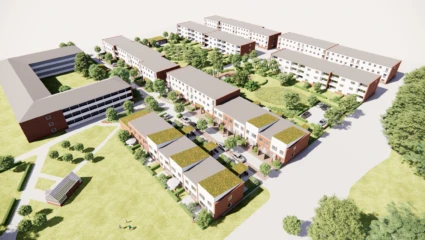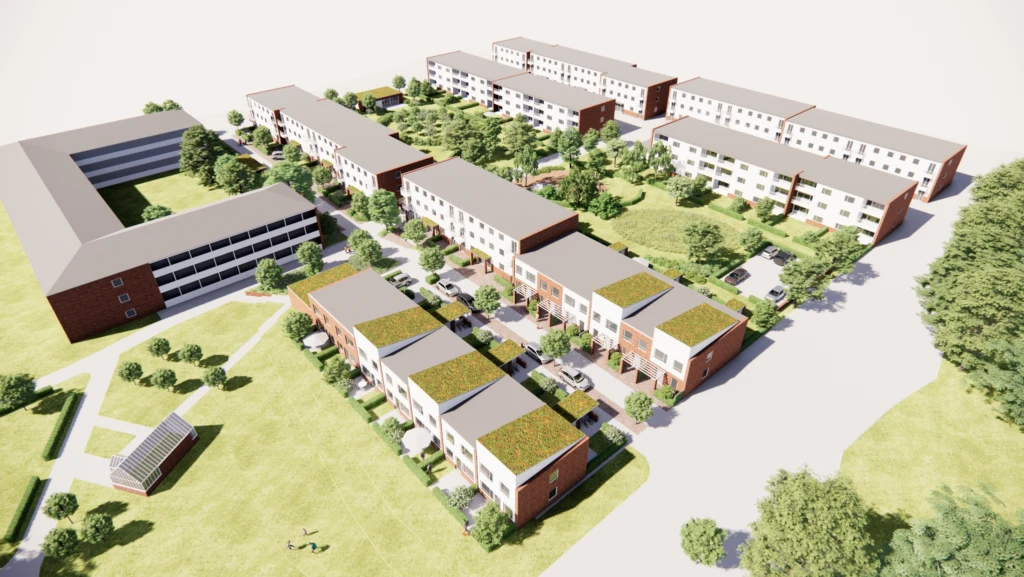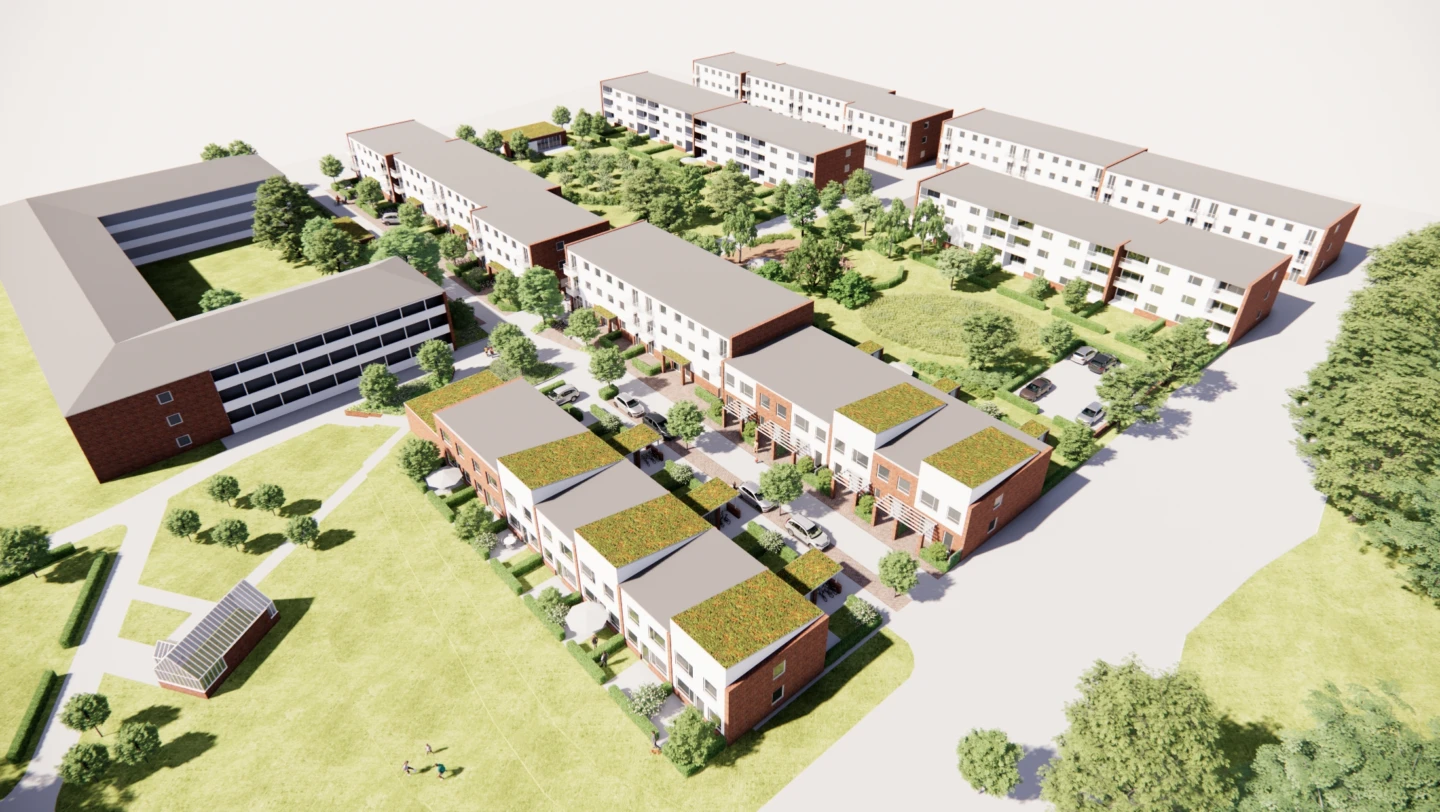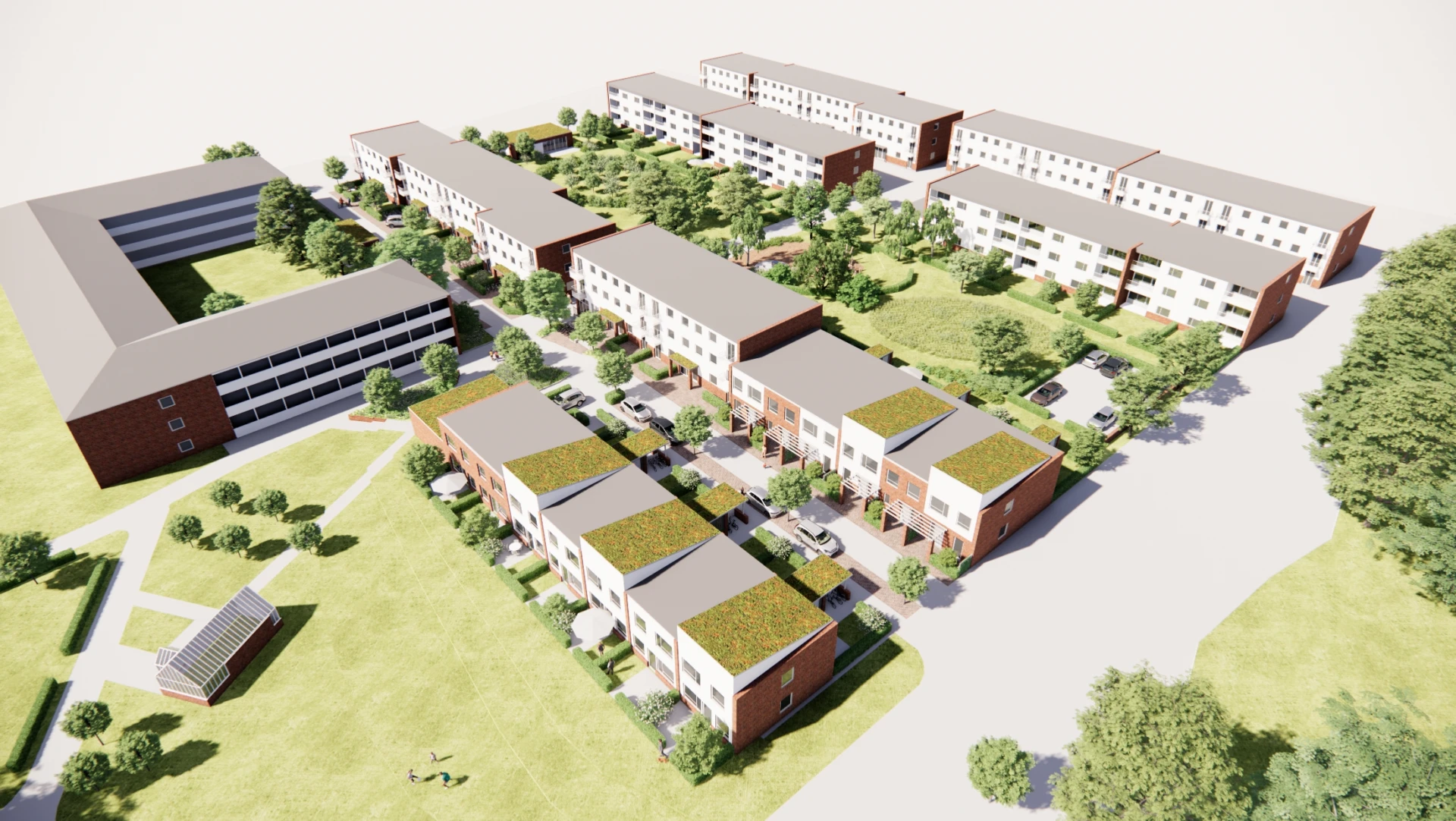Helsingborgshem Leads the Way: The City of the Future Is Built From the Houses of the Past






In Drottninghög, a residantial area located in Helsingborg, a pilot project is underway that could have major implications for how the sustainable cities of the future are planned and built. Behind the project is Helsingborgshem, which, together with the EU initiative ReCreate, is testing how housing built during Sweden’s post war Million Programme housing initiative can become part of the smart city’s future infrastructure.
Circular urban development in practice
The transition to climate-neutral cities requires more than just new solutions – it requires a new way of thinking. In the Grönkulla area of Drottninghög, one of Sweden’s most exciting examples of circular urban development is now being tested. Instead of demolishing buildings, the project explores how existing structures can be dismantled and reshaped to become more sustainable, with reduced climate impact and resource consumption.
– Instead of viewing these old houses as something ‘used up,’ we see them as resources – something that can become new again. Right now, we’re testing the renovation of the houses, removing a floor from others to convert them into townhouses, and in a third case, exploring how the existing frame can be preserved and rebuilt. It’s a sustainable and site-specific way to develop the area, says Björn Ravemark, Project Manager at Helsingborgshem.
The idea is to make use of existing information and documentation – a kind of digital twin from the 1960s – and combine it with today’s needs and technologies.
Digital building blocks and smart reuse
The prefabricated elements used in the Million Programme-era buildings may prove to be an unexpected asset. Since the construction is standardized and well-documented, components can be identified, dismantled, and reassembled with relative precision. This opens the door to a completely new kind of reuse – not just of materials, but of structure and function.
– Concrete and cement are major climate culprits. The more we can reuse, the less new material needs to be produced. It’s a concrete path toward construction with a lower carbon footprint, says Ravemark.
At the same time, valuable insights are being gained that can become part of future smart city planning. How do materials move? Which processes consume the most resources? What can be automated or standardized? These are insights that can eventually be stored, shared, and applied in other cities and projects.
A European Laboratory for Sustainable Construction
The pilot project in Helsingborg is also part of ReCreate – an EU-funded research collaboration aiming to create a European ecosystem for reuse in the construction sector. The project, which has been running since 2020, brings together academia, industry, and public actors from across Europe.
Together, they are exploring how components from old buildings can be reused efficiently – from identification and logistics to legislation and technology. In Sweden, participants include, in addition to Helsingborgshem, the Royal Institute of Technology (KTH) and Strängbetong.
– We’re still early in the process, but things are starting to move. Suppliers are seeing opportunities, municipalities are setting new requirements, and there’s a surge of initiatives in different cities, says Ravemark.
The City of the Future Isn’t New – It’s Smarter
Drottninghög’s location – just seven minutes from central Helsingborg – makes the area an interesting laboratory for future urban development. The vision is clear: to create a scalable model, both locally and internationally, where existing urban structures are not seen as obstacles, but as assets.
– If we’re going to build cities for the next 200 years, we can’t use 20th-century logic as our foundation. We need a new mindset – where reuse, flexibility, and digital knowledge are integrated from the start, says Ravemark.
And perhaps it’s precisely here – at the intersection of history and innovation – that the smart city is beginning to emerge.
